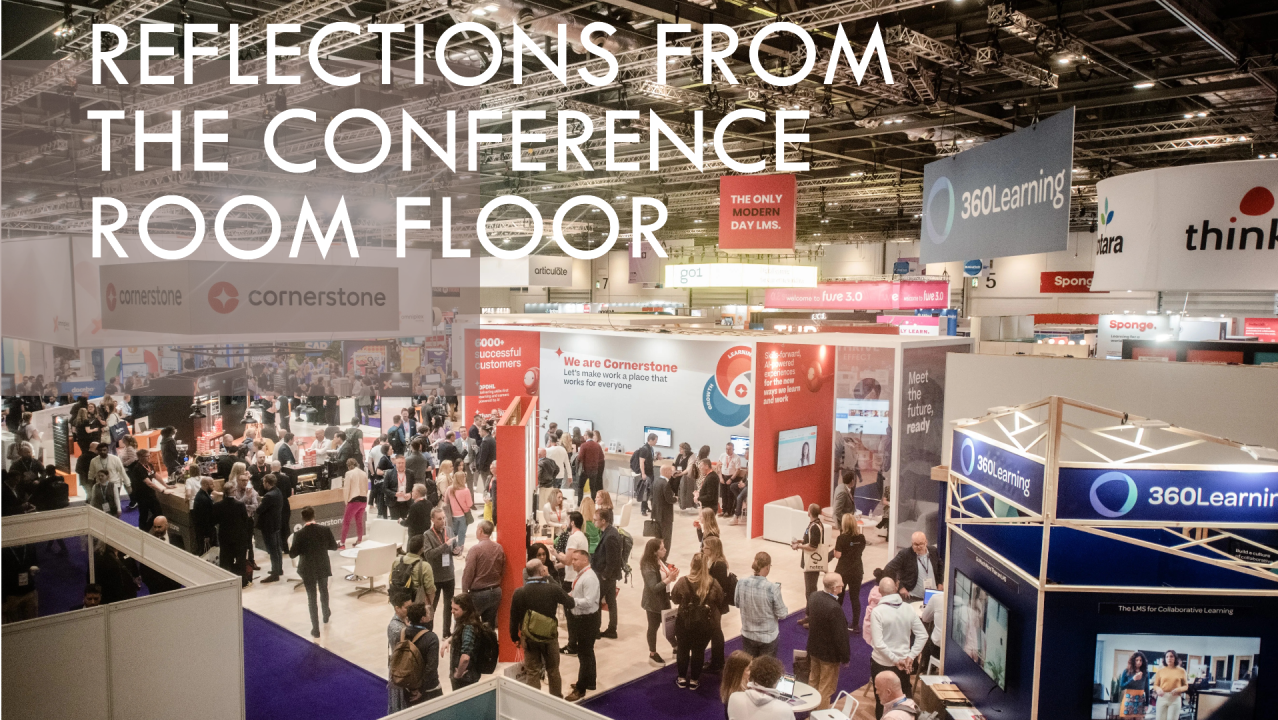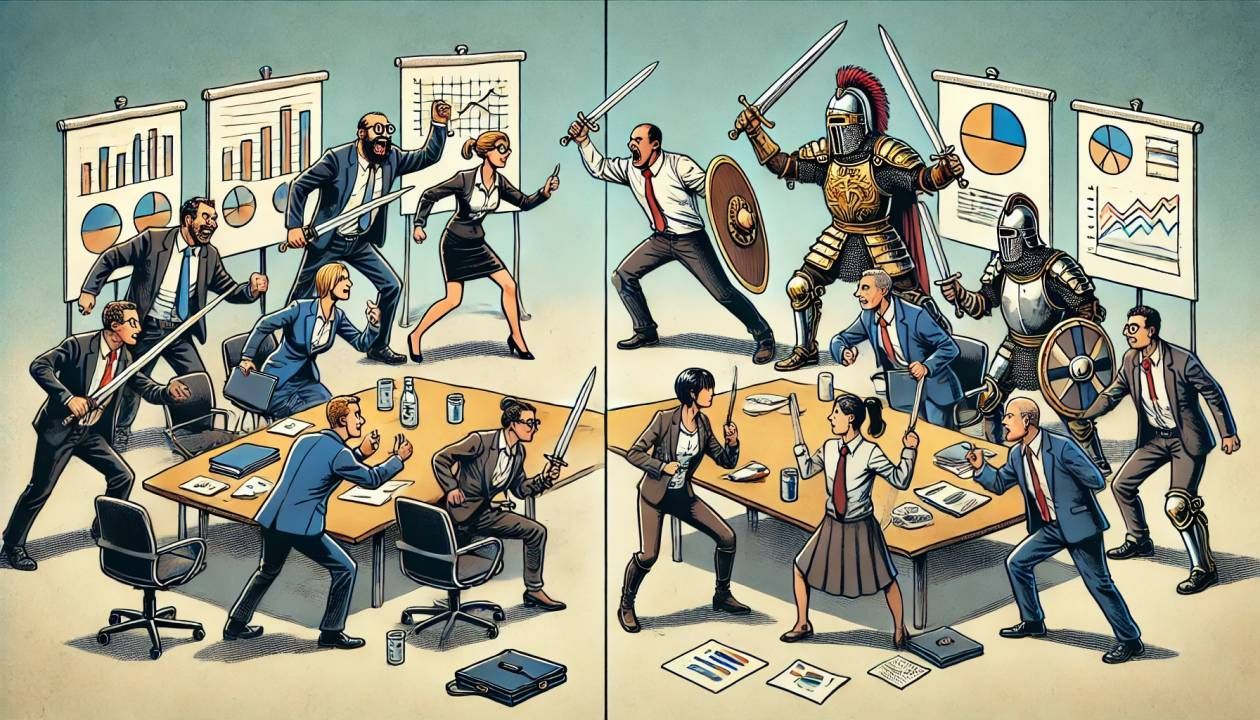Get in touch

A few days have passed since the HR Technologies UK, and reflecting on what was a great event as it provided an opportunity not only to see some great new tech but also catch up some familiar faces. Like most events it’s made by the people and the enthusiasm which comes from this group of dedicated and loyal tech lovers.
A tale of two conferences
It was clear the two sides of the conference hall mirrored exactly where we stand right now. On one side, the HR tech folks were a bit more reflective, tackling big issues on tight budgets and figuring out how to get the most out of their investments. On the other side, the learning tech crowd was all abuzz, with thoughts of the future without some of the larger enterprise questions at hand….
HR Tech
There is a clear focus on value and optimisation. We're still in a space race where new features and functions are being added at a rate of knots , and that is pretty clear from what many vendors are doing to continue to differentiate themselves. However, the push to get more out of what we already have is stronger than ever. Budgets are tight, and HR teams are constantly being asked to stretch them further.
I get the distinct impression from most vendors that they would love customers to actually be able to deploy all the wonderful features they provide in quarterly updates, let alone the advances they are making, but many customers aren't always equipped to embrace those advancements.
Chatting with customers, I kept hearing things like
'I'm not sure we're getting our money's worth,' 'definitely a lot of lessons to learn from what we have done before,' and
'I wouldn't do it that way again'. Plus, a bit about whether the first round of transformation really paid off like they hoped. In some cases, it was round two, and they were still facing tough lessons, like issues with process design, changes to the operating model, data problems and jaded stakeholders. Did we lay the right foundations for the implementation before we started? A question at the forefront of many peoples minds.
The task isn't getting easier for HR teams with an ever expanding set of demands and if anything it is getting harder. The breadth of topics HR teams are still attempting to get their heads around such as skills and becoming a skills based organisation, creating that perfect EVP, employee wellbeing and are we doing enough around DE&I? That was reflected in some great seminars and key notes but there are now so many demands out there and knowing what to focus on will be key.
Guess what? There's a tech solution for all of this! It might seem like the answer is to implement technology to fix these issues, but that's not always the right answer. I've noticed a lot of tools purchased to address these problems are underused or not properly integrated into companies' ecosystems. This ties back to the previous point about value. If data, experience or technology ecosystems are disconnected, leading to duplication or fragmentation, any perceived value will be temporary.
The dreaded two letters. It wouldn’t be a blog post on HR tech without mentioning those two letters would it? I have avoided it up to now…..but in short I don’t think there is anything that has substantially changed on the surface. Obviously AI and it’s broader revolution is moving at a pace, but since last year we are still talking around many of the same use cases. Vendors are focusing more on the infrastructure and orchestration in order to accelerate the possibility AI will bring and we are now refining the use cases in HR. Figuring out what keeps those use cases close enough to a human experience without it feeling like we are handing the keys and humanity to the machine to manage our work and our people. I think the best encapsulation is ‘I need AI to prompt me, but not take me out of the equation entirely’.
Learning Tech
Learning tech side of the conference was buzzing with the latest, greatest examples of where focused artificial intelligence can support learners and learning teams. There was a real passion which I often find with the learning community and that is awesome.
Progress progress progress......Whether it's progress in VR/AR, smarter skill marketplaces, or more advanced content creation, the practical applications are clear. It highlights how machine learning is being used to analyse data and provide insights, guiding actions in a way that's becoming common in many vendors' future plans. The discussion centred on 'narrow AI' use cases rather than 'general AI'. Specifically, it was about designing an intelligence aimed at a particular task. Whilst this is similar to the broader HR market and other markets in the past there was a general statement around ‘yep, we got AI in the platform’ but little to actually show. But the learning market is forging ahead with real world benefits.
My top pick for conference buzzword bingo was "AI hallucinations" – a term that last year would've made folks wonder how much caffeine the speaker was on. This year? The audience nodded along sagely in agreement.
I suspect some of these vendors in the learning landscape will be consumed by those on the other side of the conference floor in time, as the market grows, contracts and consolidates. Maybe there is something in actually bringing together the Learning and HR tech sides of the floor to integrate them more, (an issue often faced by organisations internally trying to connect their own learning landscape into the HR landscape………)
But what is clear that:
- Value is paramount and budgets are under massive scrutiny, optimising the investment is key.
- Learning tech is still forging new ground and is really bringing a lot of value to customers. But it is part of the equation and beware as to how this will fit with the broader HR ecosystem.
- HR is still being asked to do more, on tighter budgets with a shorter timelines to deliver and be everything to everybody......Easy eh!
Whilst these themes haven't changed massively since last year, this market is becoming an increasingly tricky one to navigate. All exciting stuff though as it can still give value, and the conference is a great opportunity to try and consume it all in one place. I look forward for HR and Learning Tech 2025.
If you want insight or advice on making the most of your investment in HR tech or navigating the market please do get in contact.

